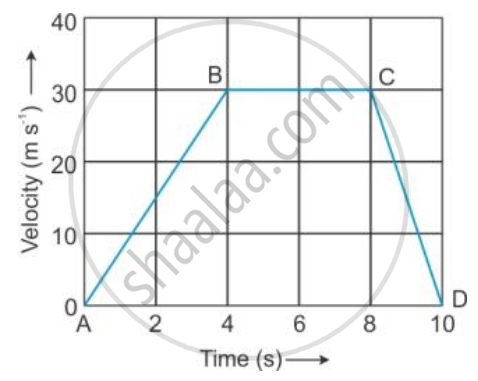Advertisements
Advertisements
प्रश्न
The velocity-time graph of a moving body is given below in Figure

The acceleration in parts AB, BC and CD.
उत्तर
Acceleration in the part AB = Slope of AB
= tan (∠BAD)
= (30/4) ms-2
= 7.5 ms-2
Acceleration in the part BC = 0 ms-2
Acceleration in the part CD = slope of CD = -tan (∠CDA)
= -(30/2) ms-2
= -15 ms-2
APPEARS IN
संबंधित प्रश्न
Name the physical quantity which gives us an idea of how slow or fast a body is moving.
A train travels the first 15 km at a uniform speed of 30 km/h; the next 75 km at a uniform speed of 50 km/h; and the last 10 km at a uniform speed of 20 km/h. Calculate the average speed for the entire train journey.
A car is moving along a straight road at a steady speed. It travels 150 m in 5 seconds:
How far does it travel in 6 seconds ?
Give one example of following motion :
Uniform velocity
A body moves from rest with uniform acceleration and travels 270 m in 3 s. Find the velocity of the body at 10 s after the start.
Define variable velocity and give one example.
Define average velocity and give one example.
What is the relation between distance and time when the body is moving with uniform velocity?
A body projected vertically up with a velocity of 10 m/s reaches a height of 20 m. If it is projected with a velocity of 20 m/s, then the maximum height reached by the body is:
What are the uses of equations of motion?
